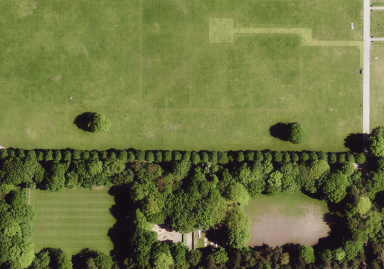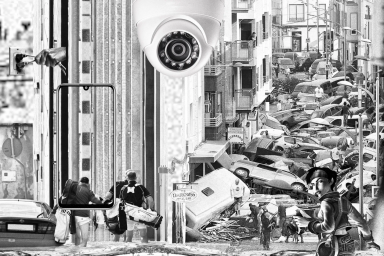Mowing the aftermath
Tracing shifts in urban lawn care and the anticipatory logics of environmental management
This dissertation examines mowing as a common yet overlooked practice in shaping future urban ecologies. Often dismissed as mundane maintenance – keeping grass short and tidy – mowing constitutes a deeply technoscientific intervention into urban green spaces. I approach the mowing of public lawns as a series of metabolic events enacted by built environment professionals, embedding it in broader trajectories of urbanization, socio-ecological imaginaries, and biotechnological control. Through a multi-sited inquiry of mowing practices, their epistemic and material infrastructures, and shifting ecological means and ends, the research explores how maintenance professionals deploy mowing to anticipate uncertain ecological futures. Using mowing as an empirical lens, the project investigates urban environmental management in the Anthropocene’s aftermath – not as restoring the past, but as navigating emergent futures through situated practices of care, control, and experimentation.
- altered environments and uncertainty
- environmental management
- anticipatory maintenance
- mowing as biotechnology
Context
Mowing is deceptively simple yet materially and epistemically complex. It is metabolic, shaping nutrient flows, supporting or suppressing plant assemblages, and enacting disturbance-regrowth regimes. Mowing co-evolved with imaginaries of leisure, health, representation, and order.1 Rooted in 19th-century European pastoral aesthetics and enabled by technosciences – synthetic fertilizers, cultivar selection, chemical inputs, and irrigation systems – lawns are now being reimagined as sites of ecological improvement.2 In Hamburg, public authorities seek to align mowing with conservation and restoration goals, expressed in the ‘ecological maintenance’ imaginary aimed at fostering future habitability amid climate and biodiversity crises. Going beyond normative models of ‘greening is good’,3 this dissertation situates mowing within longer histories of technoscientific environmental management, examining how professionals navigate unexpected ecological outcomes and shifting responsibilities in shaping inhabitable urban futures.
Aims
This research asks: How do urban maintenance professionals reconfigure mowing amid future uncertainty, and how does it serve as a practice of anticipation in urban environmental management? Rather than focusing on restoration or innovation alone, the project analyses how maintenance is reimagined in response to both historical consequences and speculative futures. Drawing on technoscience studies, it examines mowing’s after-effects as a biotechnological assemblage – producing engineered life that, like antibiotics or herbicides, exerts control while generating unanticipated consequences over time.4 I explore how experts grapple with these effects while experimenting with adapted tools and techniques. First, past futures are reconstructed by analysing historical mowing regimes and their anticipatory logics. Then, present experiments with mowing – when, how, and why grass is cut – are traced to reveal how interventions embody changing visions of environmental management. From there, unanticipated consequences – ecological surprises and disruptions – are identified as challenges or transformations of existing assumptions.
Research design
Mowing is investigated as a spatially and agentially distributed socio-technical practice unfolding across parks, roadsides, offices, geoinformation systems, equipment, management plans, and manuals. Using a mixed-methods approach, the research triangulates historical and ethnographic methods with visual tools to examine how mowing practices and their anticipatory logics have evolved and are shifting. The analysis unpacks mowing through three interrelated dimensions: (1) its products – diverse lawn ecologies; (2) its practitioners – embodied expertise and maintenance cultures; and (3) the sciences and technologies supporting it, including agriculture, horticulture, biochemical industries, landscape ecology, and environmental management.
The empirical fieldwork is conducted through three work packages:
Participant observation in Hamburg’s citywide ecological maintenance initiative ‘Natürlich Hamburg!’, focusing on how diverse actors – from designers and ecologists to maintenance crews – collaborate, plan, and reflect on their work.
Historical and technoscientific analysis of how mowing regimes evolved with biotechnologies – from fertilizers to machines – and the ecological effects that followed.
In-depth case studies of experimental mowing sites, using visual methods (e.g. sketching, mapping, envisioning) and participant observation to trace how futures are made, contested, or disrupted through local experiments.
Together, these data uncover how expectations and surprises about urban ecological futures are co-produced by different cultures of expertise, reshaping urban green space management and its onto-epistemologies in the wake of environmental disruption and ongoing alteration.
Supervisors:




